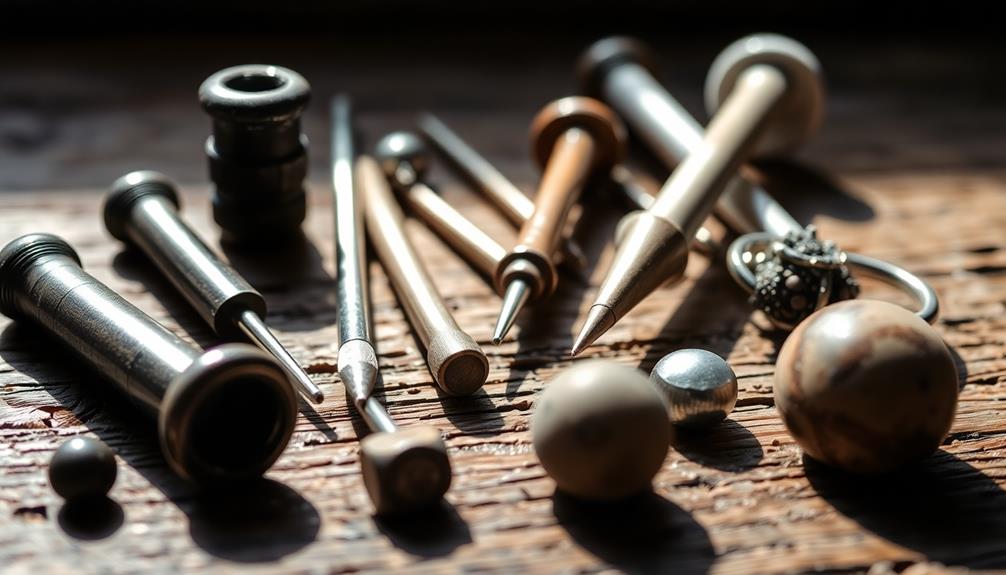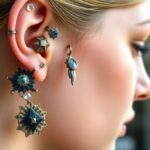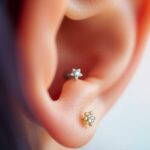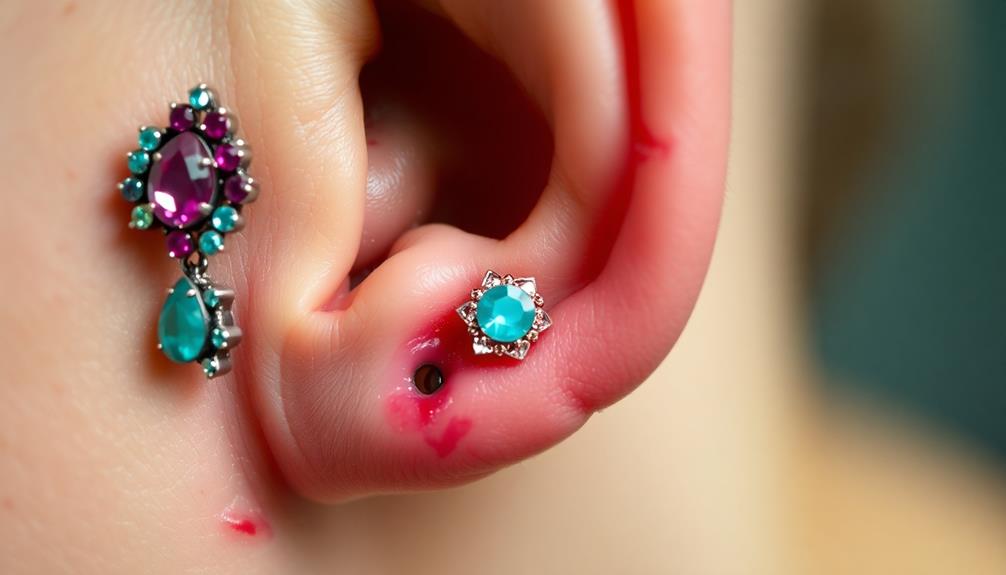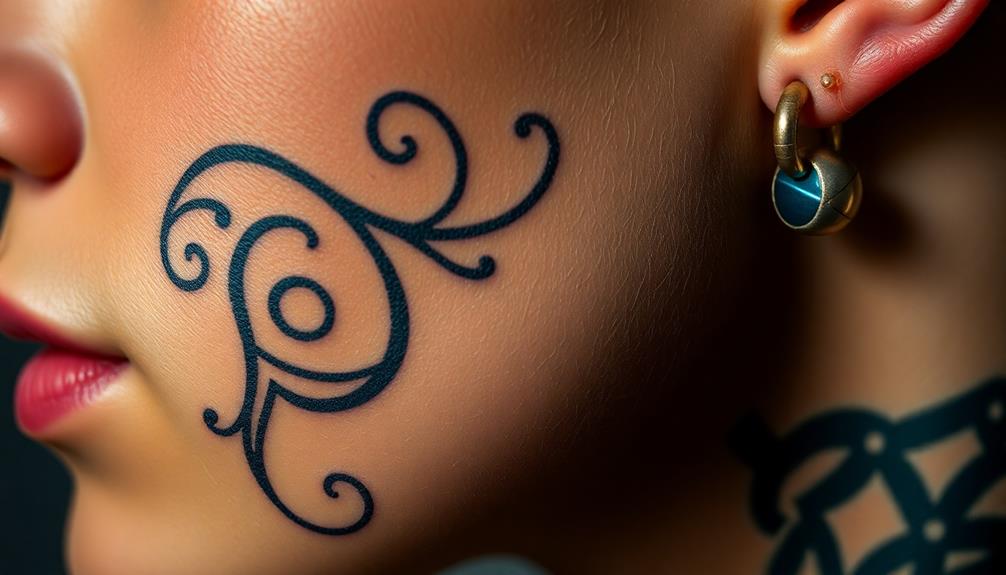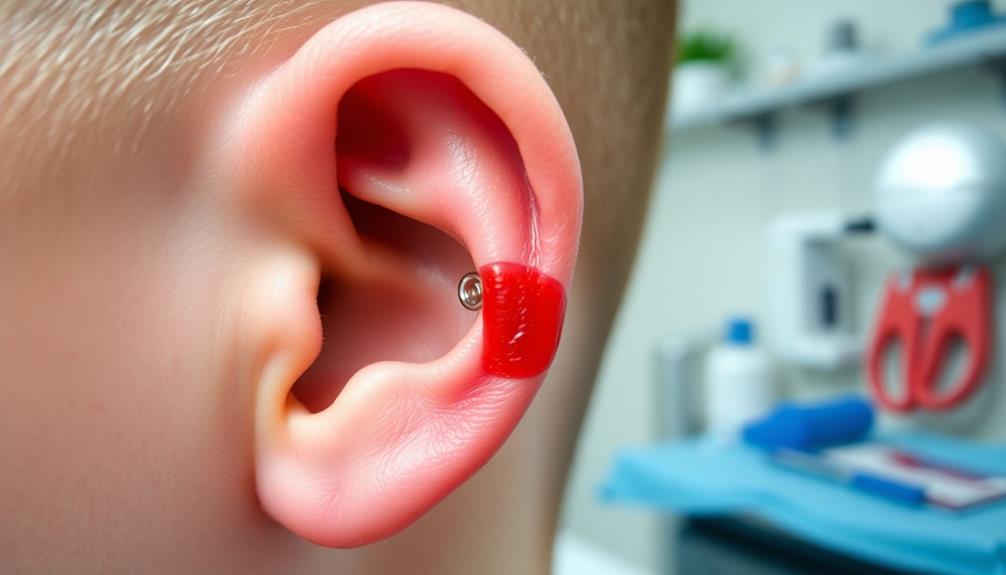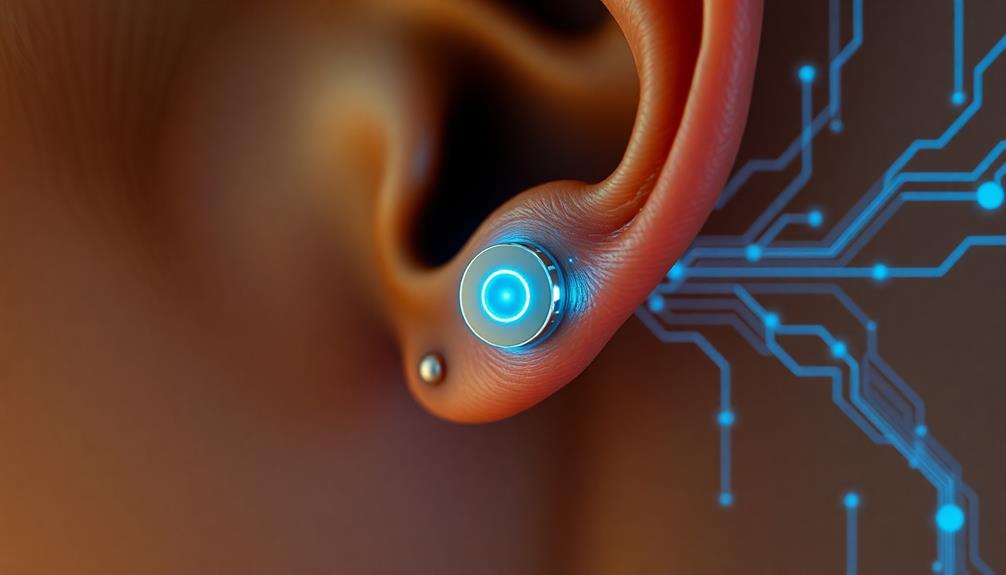To stretch your piercings safely, start with the standard size, usually 14 gauge. Wait 6 weeks to guarantee they heal before attempting to stretch. Use tapered tools at an angle, lubricating with oils like jojoba or vitamin E for comfort. Avoid skipping sizes; increase by one gauge at a time to prevent complications. Regularly massage your lobes to maintain elasticity and monitor for any signs of irritation. Remember to prioritize hygiene by keeping your earlobes clean. If you want to avoid risks and enhance your technique, you'll find more valuable insights ahead.
Key Takeaways
- Start with standard piercing sizes (14 or 16 gauge) and ensure full healing before attempting to stretch (6 weeks to 2-6 months).
- Use the tapering method by inserting a lubricated tapered tool slowly at an angle to minimize discomfort.
- Avoid skipping sizes; increase only one gauge at a time to prevent complications like tearing or blowouts.
- Regularly massage earlobes with vitamin E oil to enhance elasticity and promote healing during the stretching process.
- Maintain hygiene by washing earlobes daily and monitoring for signs of irritation or infection.
Starting Your Stretching Journey
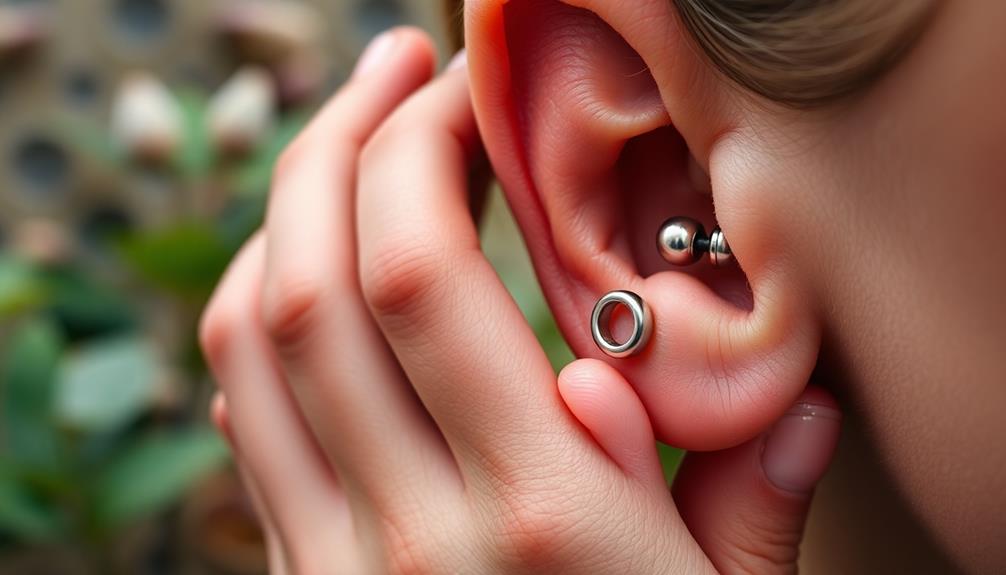
Starting your stretching journey can be an exciting yet intimidating experience. It's important to know your starting point, which is typically a standard piercing size of 14 gauge for most people, or 16 gauge if your piercings are relatively recent.
Before you begin, make sure you've achieved full healing, which usually takes at least 6 weeks, but ideally 2-6 months between stretches.
During the stretching process, it's vital to use tapers for gradually stretching your earlobes. Insert them at an angle, and don't forget to apply the oil, like jojoba or vitamin E, to ease discomfort.
Avoid skipping sizes, as this can lead to complications such as tearing or blowouts.
As you commence on this journey, regularly monitor your earlobes for any signs of irritation or infection.
Prioritize hygiene by cleaning your equipment and ears thoroughly to guarantee safe stretching.
Techniques for Effective Stretching
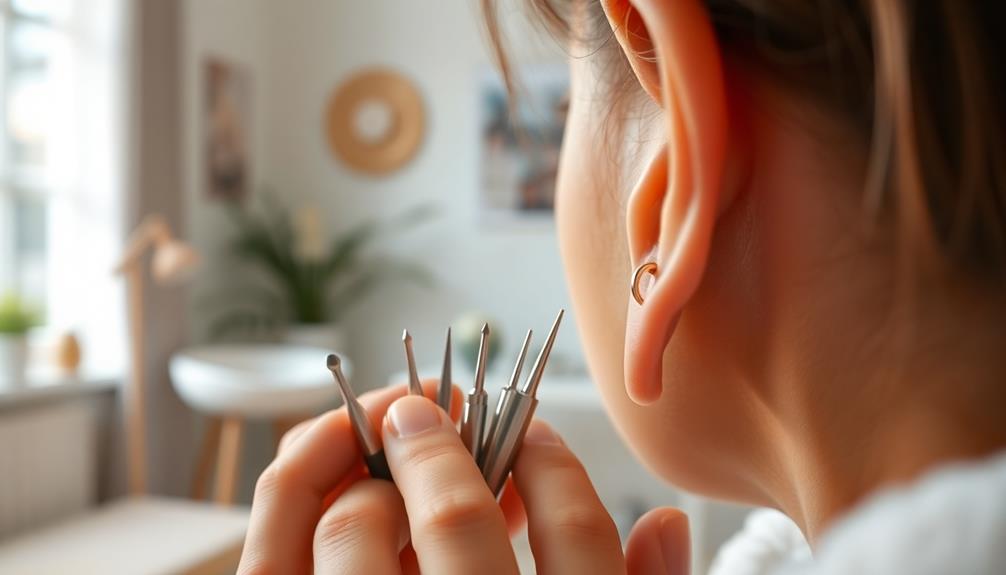
Effective stretching techniques can make a significant difference in your experience and results. When you're ready to stretch, consider using the tapering method. This involves a tapered tool that you insert slowly, pointy end first.
Don't forget to lubricate the tool to ease the stretching process and minimize discomfort. Additionally, maintaining proper hygiene is vital to prevent infection risks associated with body piercings, as emphasized in infection risks and prevention.
Another option is the taping method, which is especially useful for sizes beyond 0 gauge. You wrap ear-safe tape around plugs to gradually increase size. Remember, it's important to increase the size by only one gauge at a time to avoid complications like tearing or blowouts.
Incorporating moisturizing oils, such as jojoba or vitamin E, enhances skin elasticity and promotes healing during the stretching process. Regular application can make a real difference in your stretching experience.
Always maintain proper hygiene by cleaning your tools and the stretching area. This is essential to prevent infections and guarantee a safe stretching experience.
Understanding Stretching Limits
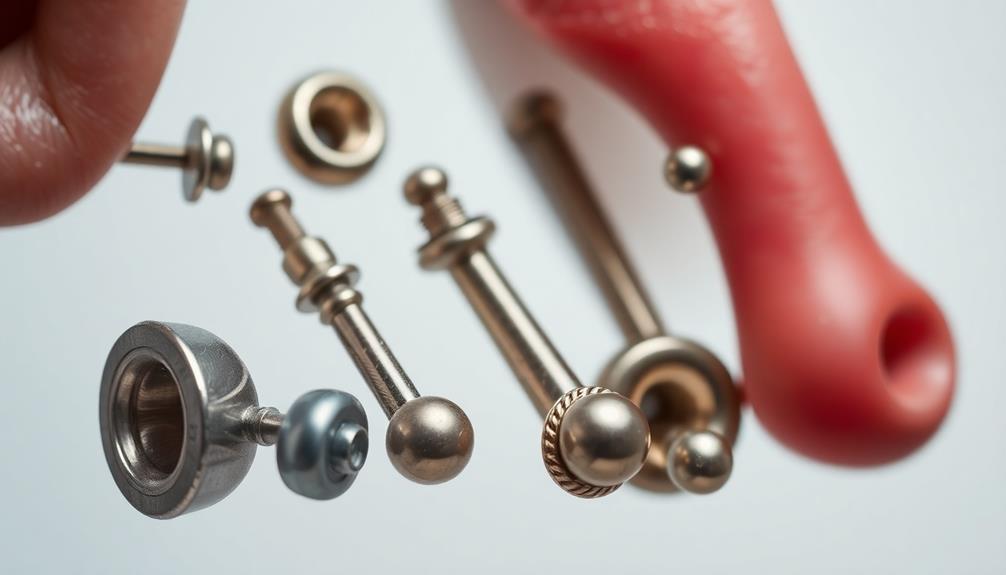
When stretching your earlobes, understanding your limits is as important as using the right techniques. Each person has different individual elasticity, so it's essential to listen to your body during the process.
Professionals typically recommend stopping at 0 gauge or preferably 2 gauge to allow for potential shrinkage. Stretching too quickly or skipping sizes can lead to complications like blowouts, which require immediate removal of plugs to avoid further damage.
To promote healing and minimize these risks, practice gradual stretching. A waiting period of at least six weeks between stretches is ideal, allowing your earlobes to heal properly.
Regularly massaging your lobes with vitamin E oil can also help maintain elasticity and support the healing process.
Care and Maintenance Tips

Proper care and maintenance of stretched earlobes is vital for guaranteeing a healthy stretching experience. First, you should always prioritize hygiene by washing your earlobes twice daily with a saline solution or hypoallergenic soap. This helps prevent infection and irritation during the healing process.
Incorporate daily massages using natural lubricants, like jojoba or vitamin E oil, to enhance elasticity and support healing. When using ear stretching kits, be mindful of the materials. Organic plugs require specific maintenance guidelines; make sure you clean them properly, as they might differ from metal or glass options.
Regularly monitor for complications, such as swelling or discharge, and address any issues immediately by consulting a professional or adjusting your care techniques. In addition to these practices, keep your earlobes moisturized to maintain their elasticity.
Daily massages will improve blood circulation, which is important for healthy stretching. By following these care and maintenance tips, you can enjoy a successful and safe stretching journey while minimizing potential risks.
Managing Risks and Complications
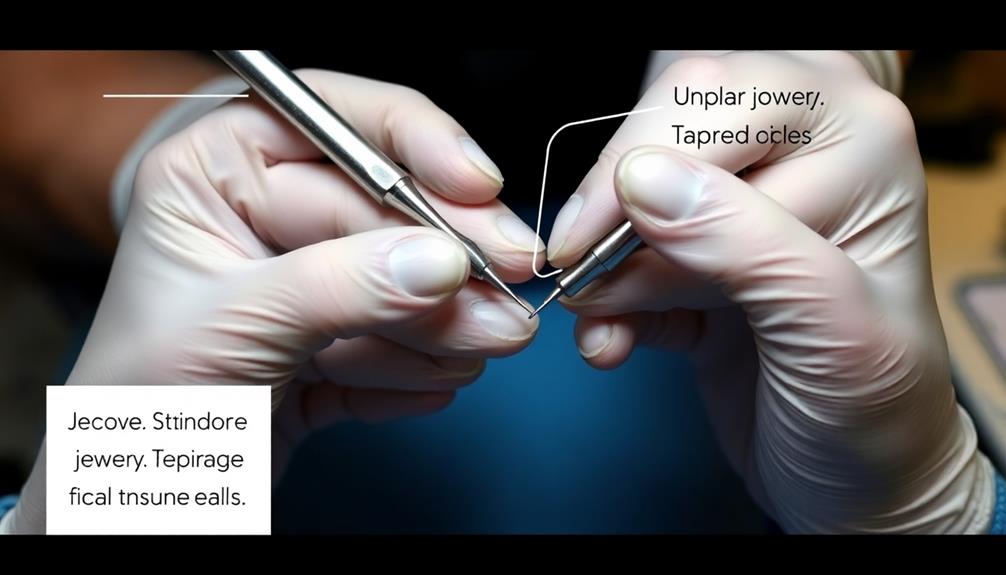
Even with diligent care and maintenance, managing risks and complications during the stretching process is essential for a safe experience. Stretching too fast can lead to severe pain, bleeding, or swelling, so it's important to listen to your body.
Always adhere to a waiting period of at least six weeks between stretches to minimize risks such as tearing or blowouts. Skipping sizes can permanently alter earlobe elasticity and increase the likelihood of complications that require immediate attention.
To enhance your stretching experience, regularly moisturizing earlobes with oils like jojoba or vitamin E can help maintain skin elasticity and prevent injuries.
Additionally, hygiene plays a significant role in avoiding infections, a common complication of improper practices. Make sure to clean your tools and ears thoroughly before and after each stretch.
Frequently Asked Questions
How Long to Stretch Ears With Tapers?
You should wait at least six weeks between each size increase when stretching your ears with tapers. This allows for proper healing and minimizes risks, so listen to your body and proceed gradually.
How to Taper a Piercing?
To taper a piercing, first confirm it's fully healed. Lubricate the taper and your earlobe, then slowly insert the taper with gentle pressure. Afterward, wait 4-8 weeks before stretching to the next gauge size.
How to Stretch a Piercing Without a Taper?
Isn't it amazing how your body can adapt? To stretch a piercing without a taper, use the taping method with safe tape, wrap slowly, and massage with oils for comfort and elasticity. Listen to your body!
How to Stretch Ears From a Normal Piercing?
To stretch your ears from a normal piercing, start with a healed 18 gauge. Use lubricated tapers, move up one gauge at a time, and allow 6 weeks between stretches for ideal healing.
Conclusion
As you commence your stretching journey, remember to embrace patience, practice consistency, and prioritize safety. By mastering effective techniques, understanding your limits, and caring for your piercings, you'll enhance your experience and enjoy the process. Stay informed to manage risks, and keep your body healthy while you stretch toward your goals. So, take the plunge, stretch wisely, and celebrate your progress—you're on the path to a vibrant and unique expression of self!
Hi, my name is Danielle, and I’m an author for piercings-body.com. I have a passion for writing and love to share my knowledge on all things body piercing-related. I’m also a huge advocate for safe body modification practices and believe everyone should be able to make informed decisions about their bodies. When I’m not writing or blogging, I enjoy spending time with my family and friends, practicing yoga, and exploring new places.

